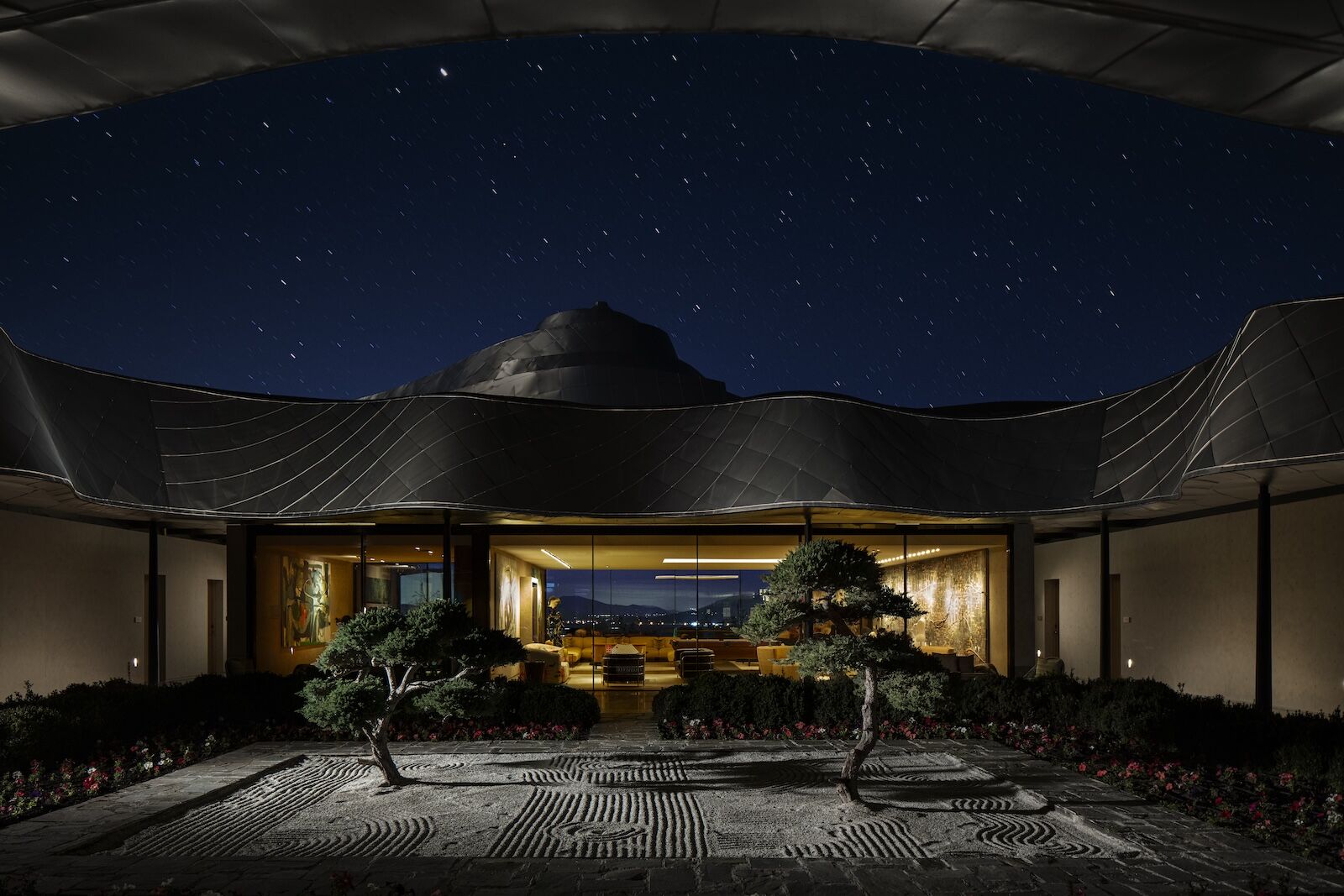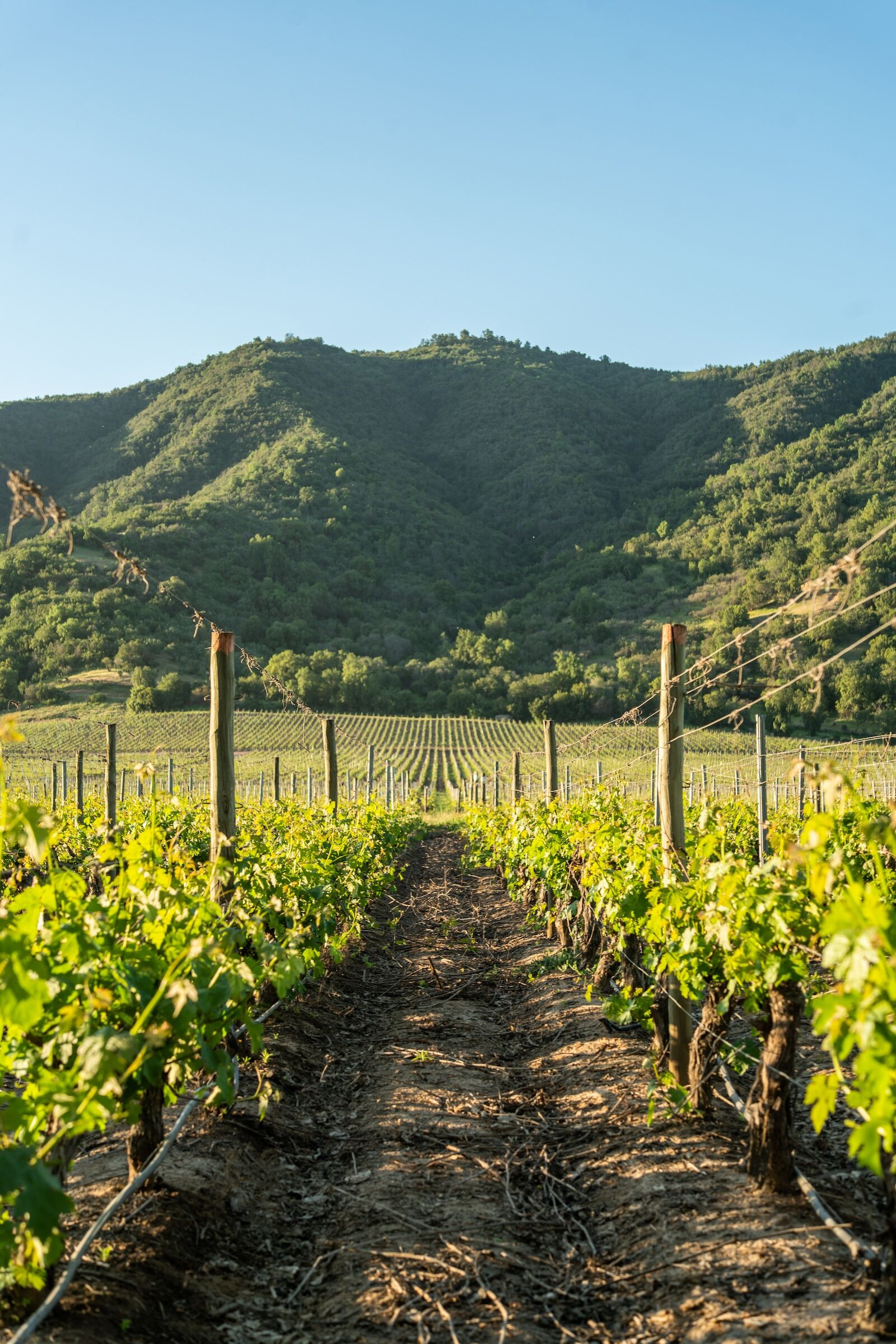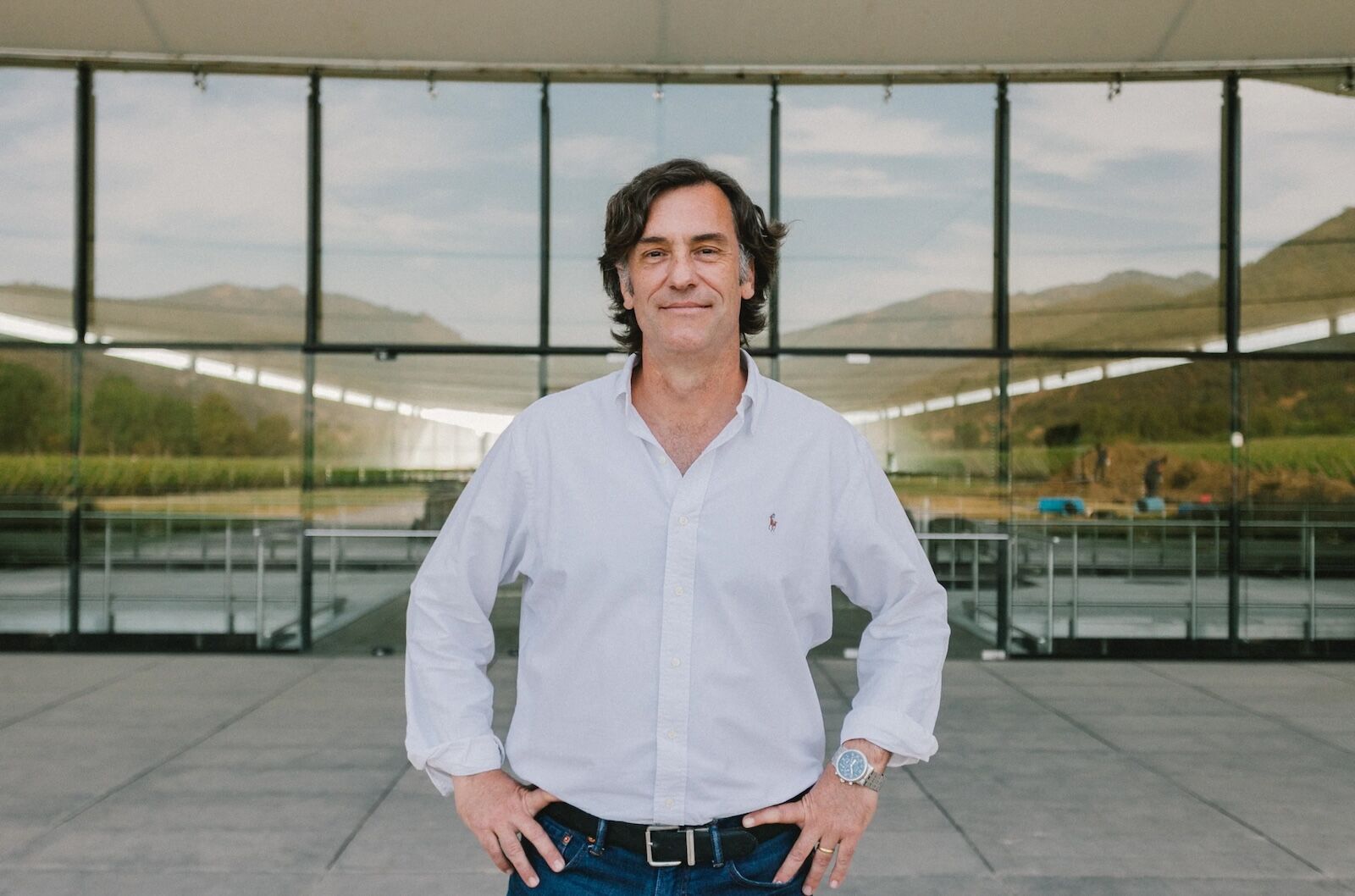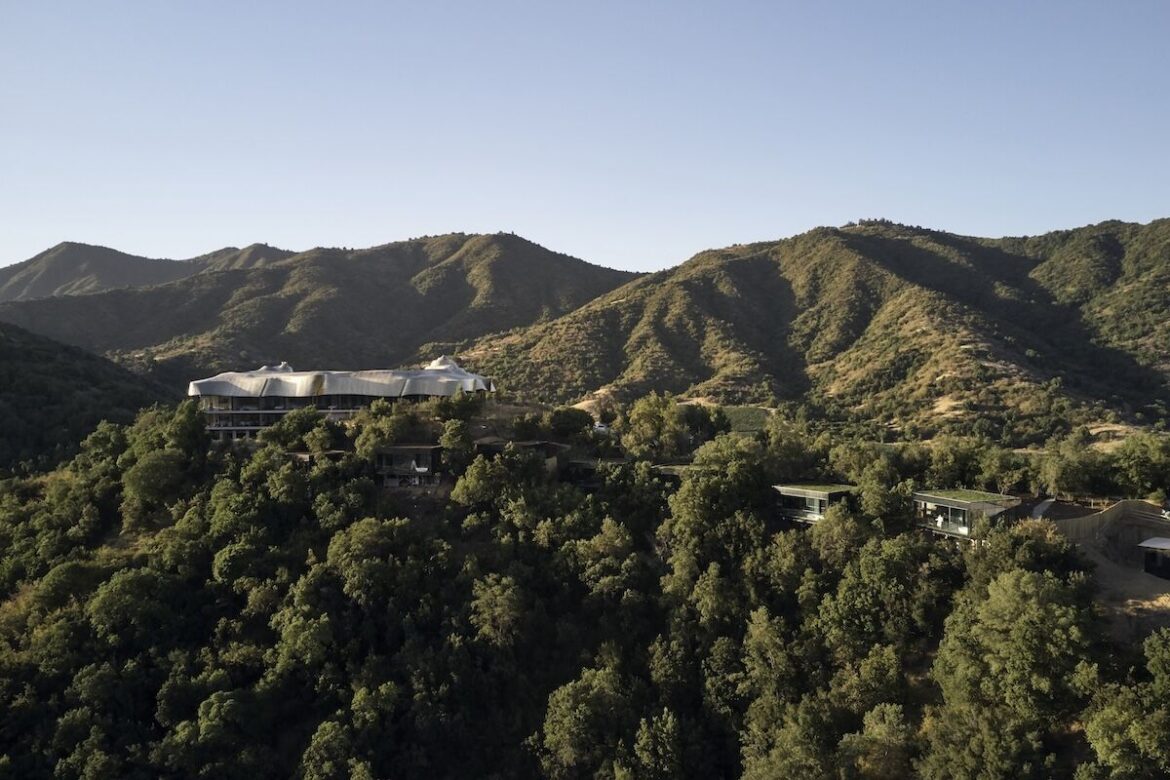Helming VIK’s viniculture and viticulture since the beginning, Vallejo has garnered acclaim for his premium red blends, positioned under the flagship VIK, La Piu Belle, Milla Cala, and A labels. In 2018, he transitioned to circular winemaking by introducing the sustainable initiatives Barroir, Amphoir, and Fleuroir. The latest endeavor, STONEVIK, unites all three and goes one step further – creating a wine which is one hundred percent powered by nature and contains only the terroir of Millahue Valley.
How STONEVIK became the ultimate natural wine

Photo: Hannah D. Cooper
“Wine is the only natural product from nature that joins people,” Vallejo told me, setting the theme for our exchange: connection. “Around the bottle, you have family, friends, an experience, a conversation; that’s wine.”
“A second question: what if we make a circular wine? What happens if we take wine into nature to be the guardian?”
Vallejo sweeps our discussion back to February 2023, when the seed of a new idea started to form. Now functioning as a circular winery, VIK could create a fully circular wine by aging it under the custodianship of the oak forests bordering VIK’s 11,000-acre estate.
To make STONEVIK, Organic Cabernet Franc, Cabernet Sauvignon, and Carménère grapes are hand-picked from VIK’s 808 acres of vineyards, then fermented for one month in barrels toasted with oak from the aforementioned forests. This wine is then carried to those same 300-year-old trees, 1,000 meters (3,280 feet) above sea level, and partially buried in amphoras made of clay excavated from VIK’s land.
“The forest is a community; the trees have a connection through the roots and fungi,” shares Vallejo, talking about how, through Barroir, VIK’s wines are infused with three centuries of flavor.
STONEVIK carries even more of this legacy due to the eight-month ageing process in the forest.
Much as the Viks prioritized their research, Vallejo conducted a meticulous, science-backed investigation before settling on the precise coordinates. Upon finding naturally occurring circular patterns in the sector called La Robleria, he enlisted a geologist, who confirmed that a geological fault intersecting a water table was creating an electromagnetic energy field.
Holistic wines aged under the stars

Photo: VIK Retreats
Learning of this, Vallejo called in an astronomer, who advised on a mandala-based positioning for the STONEVIK amphoras guided by Stonehenge but configured for the Southern Hemisphere. The wine is collected on the summer solstice (this year’s being December 21) and bottled at the winery that very same day. Vallejo sent seven vessels to the mountain, due to the number’s significance in both science and spirituality.
“This is science and it is nature,” Vallejo explains. “This wine is not only connected with the soil, the forest, and the wind that comes from the ocean, but also with the stars, the moon, and the sun. That’s why it is one hundred percent connected to nature.”
La Robleria’s electromagnetic energy causes the wine to vibrate and polymerize the tannins, producing a soft, rounded, and expressive wine, further nurtured by exposure to the spring equinox and lunar cycles. And what of STONEVIK’s taste?
“The wine is fantastic, which is the most important thing,” Vallejo assures me, adding that even if there is a good story, this is worthless if the taste doesn’t come through. “But this wine, STONEVIK, has a special energy; it’s super natural – more than natural, it’s the ultimate natural wine.”
Circular winemaking at VIK: Barroir, Amphoir, and Fleuroir

Photo: VIK Retreats
To fully appreciate the architecture of STONEVIK means understanding VIK’s switch to circular winemaking in 2018. It started with Barroir, when the winery began toasting barrels with oak from the property’s native forests. No trees are felled; Vallejo’s team only sources from naturally fallen trees.
Amphoir came next, whereby amphoras are crafted from clay sourced from the Millahue Valley, charging the wine with minerality and terroir-driven flavors unique to VIK Chile. Fleuroir, the youngest project, is the act of taking yeast from wildflowers harvested from VIK’s grounds for fermentation, negating the need for artificial additives. These three initiatives fully capture the essence of the Millahue Valley and reflect VIK’s commitment to holistic, circular winemaking.
“When we toast the barrels with our own oak, we are expressing the flavor of 300 years,” Vallejo tells me, explaining the heritage of these forests and how the terroir shapes the wine. “This is the DNA, the story of this place.”
Tours of VIK Winery include a visit to the chamber where these barrels are prepared. A conscious choice was made that the site where the STONEVIK amphoras rest should remain off-limits in order to preserve the site’s energy and protect the land.
Cristián Vallejo’s winemaking philosophy

Photo: VIK Retreats
Sustainability has been a pillar at VIK since the get-go, starting with the founders’ decision to assign less than 10 percent of the estate to planting vineyards. Smiljan Radic and Marcelo Daglio were chosen to design the winery and hotel, respectively, based on their low-impact architectural visions. The estate has its own organic garden and employs avant-garde means of reducing waste and energy consumption. As an oenologist, Vallejo questions every process and eternally chases improvement, particularly in terms of sustainability and holism, while maintaining a focus on creating enjoyable wines.
“I am happy when I see people finish the bottle and open a new one,” he tells me, reflecting on this circular approach to winecraft and using it as a way of fostering a connection with land, people, art, and science.
While he makes it clear he doesn’t expect everyone to like every single varietal, he encourages discussion in the same way opinions differ on art.
“Wine, like art, is a personal interpretation of a place; it’s a way to share an experience of a place with people,” Vallejo says, looping back to the notion of interconnectedness.
This was apparent during my wine tasting and dinner at Milla Milla with members of the VIK team – two unhurried experiences which felt more like an evening with friends as we plucked out different tasting notes from the estate’s 12 micro valleys.
“I call our wines a book; every glass is a chapter, every sip is a page,” adds Vallejo, which feels fitting for wine created in the Nation of Poets.

Photo: Hannah D. Cooper
Thoughtful with his language, the oenologist discusses his wines in terms of personality rather than style. Although VIK’s portfolio is likened to the wines of Bordeaux — Vallejo worked alongside the late Paul Pontallier at Château Margaux – he avoids the term Bordeaux-style wine, which he considers imitation. Vallejo’s methodology expresses the Millahue Valley – known in the Mapuche language as the “golden place.”
“When wine has a personality, it is unique – and that’s what happens with our wines,” says Vallejo, detailing how each of the estate’s vineyard sectors carries different soils and microclimates.
Creating wine has been an education in patience for Vallejo, who has come to accept that the art of wine takes time, especially when nature is the custodian.
“Every decision we make in wine is not for tomorrow, it will be for next year,” he says, sharing that a white wine is the next volume in VIK Winery’s story – but we’ll need to hang tight. ![]()


Dining and Cooking